Clifford Garstang's Blog, page 27
March 10, 2021
I’ve Got Questions for Joanell Serra
Editor’s Note: This exchange is part of a series of brief interviews with emerging writers of recent or forthcoming books. If you enjoyed it, please visit other interviews in the I’ve Got Questions feature.
 (Her)oics: Women’s Lived Experiences During the Coronavirus Pandemic, Joanell Serra and Amy Roost, eds.What’s the title of your book? Fiction? Nonfiction? Poetry? Who is the publisher and what’s the publication date?
(Her)oics: Women’s Lived Experiences During the Coronavirus Pandemic, Joanell Serra and Amy Roost, eds.What’s the title of your book? Fiction? Nonfiction? Poetry? Who is the publisher and what’s the publication date?(Her)oics: Women’s Lived Experiences During the Coronavirus Pandemic will be out March 11, 2021 with Regal House Publishing (Pact Press.)
In a couple of sentences, what’s the book about?(Her)oics: Women’s Lived Experiences During the Coronavirus Pandemic draws together the stories of fifty-two women across the U.S. during the Covid-19 pandemic. Although differing widely, based on location, age, race, and health, they share the unique capacity of women to bring their strength, ingenuity, and love—for others and for self—to an uncertain time. The anthology is inspired by both the risks of the pandemic inherent to women and their tremendous role in the country’s response.
What’s the book’s genre (for fiction and nonfiction) or primary style (for poetry)?The stories are largely told in traditional essays, with a few being more lyrical. They vary from very casual—almost like journal entries—or alternative structures, like a quiz, to more traditional essays. Many have humor, all are true.
What’s the nicest thing anyone has said about the book so far?“I’m a proponent of sharing our truth. These womens’ stories are raw and real. They make me want to cry, or laugh, or call them up and say this sh** happened to me too! We’ve got this. These women really are the heroines of the pandemic: nurses, doctors, teachers, badass moms, women having a mental health crisis, healers, grandmas… I love this.”
~ Jennifer Pastiloff, best-selling author of On Being Human
“(Her)oics is just the antidote our world needs right now. Here are the accounts of women—brave, fierce, unflinching—meeting head on the unprecedented challenges we are currently facing. Just holding this anthology in my hands gave me a sense of overwhelming hope and courage. Upon opening it, I found a polyphony of voices, each distinct and resonant, working seamlessly together to lighten up these uncertain times.”
~ Alex Espinoza
What book or books is yours comparable to or a cross between? [Is your book like Moby Dick or maybe it’s more like Frankenstein meets Peter Pan?](Her)oics has the lessons of a book like Chicken Soup for the Soul, crossed with the grit and humor of a show at the Moth.
Why this book? Why now?The pandemic has been particularly hard for women of all ages and walks of life– senior citizens, young mothers, nurses, doctors.Women are more likely to have lost their income and very likely to be the parent taking on the brunt of the parenting. This book is a chance to share their stories of grief, pain, and courage as well as offer hope and connection.
Other than writing this book, what’s the best job you’ve ever had?I am a therapist as well as a writer. While that has been challenging in the pandemic, it has been rewarding too. I just had this clip included in the NY Times Newsletter this week—it says a bit about my experience.
What you’re doing I put on my therapist cape and fight the enemy that is attacking my community: mental despair. I listen, counsel, advise, cajole, tell bad jokes, tell better jokes, Zoom, meet in outdoor spots, bring up mindfulness, recommend books, suggest Netflix comedies, refer to Jung, encourage journaling, reflect on current events, drop hints of hope, explain neural pathways, pull Tarot cards if desperate, lavish praise, nurture dreams, offer perspective, share grief, call other therapists for support, sigh, and pray for everyone. I’m giving it all I’ve got. — Joanell Serra, Sonoma, Calif.What do you want readers to take away from the book?That women’s experiences are extremely diverse, while there are themes: love for family, determination, anger at injustice, resilience. In order to learn from this harrowing time, we need to share our truths, and that starts with writing them down. We worked hard on including very diverse perspectives, and there are many lessons to take from that.
What food and/or music do you associate with the book?I would say a mix tape! Everything from country western to hip-hop. And food wise, I picture a table laden with food from many cultures—Native American, Latinx, Creole, Middle Eastern, brisket for a cedar, dishes for Ramadan, and sweets from every city–plus wine, there are many mentions of wine!
What book(s) are you reading currently?Red at the Bone by Jaqueline Woodson and a new book of essays called Hungry Hearts, edited by Judith Rudloph Walsh. Both books are quite good so far.
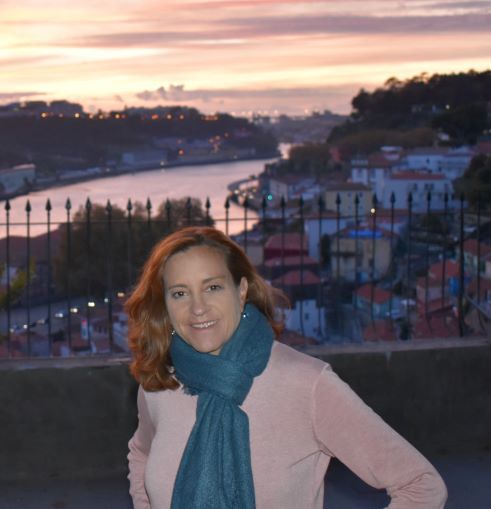 Joanell Serra
Joanell SerraLearn more about Joanell at her website.
Follow her on Instagram, Twitter, and Goodreads.
Buy the book from Regal House Publishing, Bookshop, or Amazon.
March 8, 2021
I’ve Got Questions for Ellen Birkett Morris
Editor’s Note: This exchange is part of a series of brief interviews with emerging writers of recent or forthcoming books. If you enjoyed it, please visit other interviews in the I’ve Got Questions feature.
 Lost Girls by Ellen Birkett MorrisWhat’s the title of your book? Fiction? Nonfiction? Poetry? Who is the publisher and what’s the publication date?
Lost Girls by Ellen Birkett MorrisWhat’s the title of your book? Fiction? Nonfiction? Poetry? Who is the publisher and what’s the publication date?Lost Girls
Short Stories
TouchPoint Press
June 2020
Lost Girls explores the experiences of women and girls as they grieve, find love, face uncertainty, take a stand, find their future, and say goodbye to the past. A young woman creates a ritual to celebrate the life of a kidnapped girl, an unmarried woman wanders into a breast feeder’s support group and stays, a grieving mother finds solace in an unlikely place, and a young girl discovers more than she bargained for when she spies on her neighbors. Though they may seem lost, each finds their center as they confront the challenges and expectations of womanhood.
What’s the book’s genre (for fiction and nonfiction) or primary style (for poetry)?Literary Fiction
What’s the nicest thing anyone has said about the book so far?“There is something about reading the short stories in the collection Lost Girls by Ellen Birkett Morris that makes me think of a magic trick. Blink and you won’t be able to figure out how she does it. But then, don’t blink. Stare as hard as you can. Retrace favorite paragraphs and lines and still be mystified about her pointillistic ability to create the images and lines that take the breath out of your body and create the unforgettable lost girls — and women — who inhabit these spaces rarely immortalized as engagingly or sympathetically in contemporary literature.”
–Yvette Benavides, Book Public, Texas Public Radio
Hints of Eudora Welty set in a southern version of Winesburg, Ohio
Why this book? Why now?I was born to write this book about women overcoming challenges and finding their voices. I was a shy kid and walked with a limp and found myself underestimated at times. I’ve spent my adult life working for women’s equality and writing about women’s issues as a freelance journalist. This book allowed me to creatively explore things that matter to me. I first realized I had a collection that would work when the #MeToo movement began. I saw a hunger for stories about the authentic experiences of women.
Other than writing this book, what’s the best job you’ve ever had?I collected student loans by phone while I was in college. I got to hear some pretty strange excuses and to work alongside other people my age. We had lots of fun kidding around between calls.
What do you want readers to take away from the book?I want them to feel something. I hope they have a better understanding of how it can be to operate as a woman in the world.
What food and/or music do you associate with the book?A peach, smooth and bright and pretty to look at on the outside, juicy and tart on the inside with a hard spiky pit at its center.
What book(s) are you reading currently?What’s Mine and Yours, Naima Coster
How Fiction Works, James Wood
A Swim in a Pond in the Rain, George Saunders
The Lost Manuscript, Cathy Bonidan
The Liar’s Dictionary, Eley Williams Party of Two, Jasmine Guillory
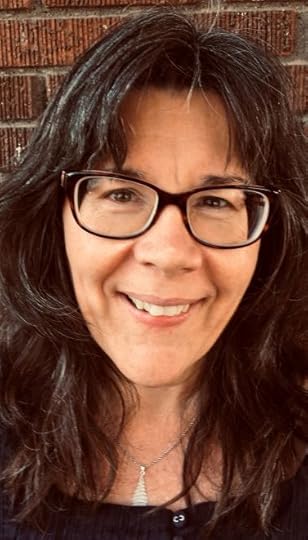 Ellen Birkett Morris
Ellen Birkett MorrisLearn more about Ellen at her website.
Follow her on Facebook, Twitter, and Instagram.
Buy the book from Bookshop.
March 5, 2021
I’ve Got Questions for Ned Randle
Editor’s Note: This exchange is part of a series of brief interviews with emerging writers of recent or forthcoming books. If you enjoyed it, please visit other interviews in the I’ve Got Questions feature.
 The St. Michael Poker & Drinking Club by Ned RandleWhat’s the title of your book? Fiction? Nonfiction? Poetry? Who is the publisher and what’s the publication date?
The St. Michael Poker & Drinking Club by Ned RandleWhat’s the title of your book? Fiction? Nonfiction? Poetry? Who is the publisher and what’s the publication date?The St. Michael Poker & Drinking Club
Fiction; Regal House Publishing; March 2020
In a couple of sentences, what’s the book about?The book is about faith, hope, and love. And humor. We can’t make it in this world without humor. A group of diverse clergymen gather for comradery with unexpected results. The men are tested in their own unique ways.
What’s the book’s genre (for fiction and nonfiction) or primary style (for poetry)?The book is Literary Fiction that features religious men, but it is not necessarily a religious book. It addresses universal truths and moral issues present in every man’s life.
What’s the nicest thing anyone has said about the book so far?First, I’ve got to applaud Ned Randle on his ability to create vivid characters who are clever and fascinating to watch on the page. Each of the clergymen’s lives are just specific enough to convince us of their reality, while their unique personalities offer us the opportunity to situate them as symbols of their chosen religion. It’s a great way to take a look at these religions separately, to brainstorm in which ways they can coexist and clash. Kirkus Review
What book or books is yours comparable to or a cross between? [Is your book like Moby Dick or maybe it’s more like Frankenstein meets Peter Pan?]Earthly Powers by Anthony Burgess. Burgess’s work addressed faith and miracles and features very human characters.
Why this book? Why now?We need stories to uplift our souls in this graceless age we now live in.
Other than writing this book, what’s the best job you’ve ever had?I was a patent, trademark and copyright attorney. I got to work with a number of interesting, creative people.
What do you want readers to take away from the book?That those men and women we trust to be stewards of our faith are as frail and human as we are. They suffer from loneliness and crises of faith, just like everyone else.
What food and/or music do you associate with the book?Beer and potato chips. The card players like their beer and Father Tom likes his chips.
What book(s) are you reading currently?I love the novels of Tolstoy and Dostoevsky. I currently am rereading War and Peace. On the nonfiction side, I’m muddling through Caste by Isabel Wilkerson and Ron Chernow’s Grant biography.
 Ned Randle
Ned RandleLearn more about Ned at his website.
March 3, 2021
I’ve Got Questions for Karla Huebner
Editor’s Note: This exchange is part of a series of brief interviews with emerging writers of recent or forthcoming books. If you enjoyed it, please visit other interviews in the I’ve Got Questions feature.
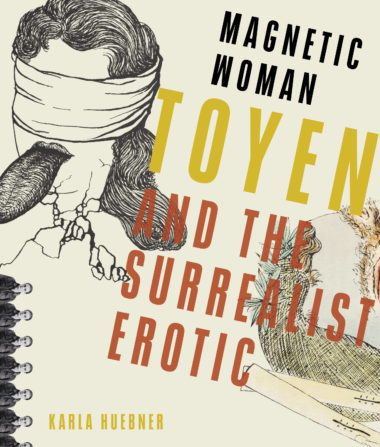 Magnetic Woman: Toyen and the Surrealist Erotic by Karla HuebnerWhat’s the title of your book? Fiction? Nonfiction? Poetry? Who is the publisher and what’s the publication date?
Magnetic Woman: Toyen and the Surrealist Erotic by Karla HuebnerWhat’s the title of your book? Fiction? Nonfiction? Poetry? Who is the publisher and what’s the publication date?Magnetic Woman: Toyen and the Surrealist Erotic (nonfiction), University of Pittsburgh Press, 22 December 2020
In a couple of sentences, what’s the book about?Magnetic Woman is the first book in English to examine the life and work of the artist Toyen (Marie Čermínová, 1902–80), a founding member of the Prague surrealist group. Toyen’s early life in Prague enabled her to become a force in three avant-garde groups—Devětsil, Prague surrealism, and Paris surrealism—yet, unusually for a female artist of her generation, Toyen presented both her gender and sexuality as ambiguous and often emphasized erotic themes in her work.
What’s the book’s genre (for fiction and nonfiction) or primary style (for poetry)?Magnetic Woman combines biography and cultural history to illuminate not just the artist but the world of the Prague avant-garde.
What’s the nicest thing anyone has said about the book so far?A lot of people have told me they are excited to see this book coming out, but here’s some praise that hasn’t appeared on the book cover or been published yet elsewhere: Alyce Mahon of Cambridge University has said it’s “a major contribution to our study of Surrealism” and Keith Holz of Western Illinois University calls it “everything one could imagine and hope for in a critical study of Toyen, the social circles of the artist, the artworks’ frank and imaginative sexuality, and the societies and the political cultures her engaged life and career spanned … [it] is a gift. … some of the absolute best writing and scholarship in art history on Central Europe appearing today.”
What book or books is yours comparable to or a cross between? [Is your book like Moby Dick or maybe it’s more like Frankenstein meets Peter Pan?]I’d like to think that it’s comparable to Janet Kaplan’s Unexpected Journeys: The Art and Life of Remedios Varo and Hayden Herrera’s Frida: A Biography of Frida Kahlo, both of which provide meticulously researched but also wonderfully rich and readable accounts of fascinating women artists who were not all that well known to the public prior to the publication of those biographies.
Why this book? Why now?Interest in Czech modernism has been growing worldwide since the fall of communism; while the lively and fascinating Czech avant-garde of 1890 to 1938 was somewhat known to modernists in other countries back then, during the communist era these creators were largely forgotten outside Czechoslovakia. With new awareness in the English-speaking world of these creative figures, the time is ripe to go beyond basic introductions to their work. Also–and I hope the pandemic does not make me a liar–2021 will see the opening of a major Toyen exhibition that will tour from Prague to France, Germany, and the Art Institute of Chicago!
Other than writing this book, what’s the best job you’ve ever had?I did really love writing this book—never got sick of the book itself, just the long road to publication—and the other best job I’ve had is being a fiction writer. But being an art history professor, and working in theater years ago, probably come next in line.
What do you want readers to take away from the book?I hope that readers will come away with a sense of wonder at the amazing range of work and also the remarkable circle of friends that a young gender-queer artist was able to make in both Czechoslovakia and France nearly one hundred years ago; and to see that this artist was able to become a major figure in both interwar Czechoslovak culture and in the international surrealist movement.
What food and/or music do you associate with the book?What a fun question! Well, despite being a near-vegetarian, I enjoy good Czech cooking, so I can imagine that Toyen and friends enjoyed many dishes featuring pork, cabbage, and potatoes, as well as cucumber salad, Bohemian beers, and Moravian wines. Musically, jazz! The interwar Czech modernists tended to be major fans of jazz, and one of the founding Prague surrealists, Jaroslav Ježek, wrote many wonderful jazz compositions in his role as bandleader for the Liberated Theater, as well as writing pieces that are more in the classical tradition. Another composer associated with the Prague surrealist group was the theater director E. F. Burian, and then I would also mention the avant-garde composers Alois Hába (who used quarter-tones), Miroslav Ponc (who experimented with color in connection with music), and Bohuslav Martinů. That’s not to leave out better-known composers like Leoš Janáček (much older but still composing in the interwar years). Or, of course, French modernist composers of the day or the American jazz that inspired European jazz.
What book(s) are you reading currently?This is always a tough question because I tend to have a lot of books underway and often they are not at all new, although I want to support new work. I keep dipping into Walter Benjamin’s Arcades Project, and I recently wrote a review of Marta Filipová’s Modernity, History, and Politics in Czech Art for Austrian History Yearbook. In fiction, I’ve been reading Michael Chabon’s Moonglow, Tayari Jones’s An American Marriage, and Diane Setterfield’s Once Upon a River. That’s a long enough list.
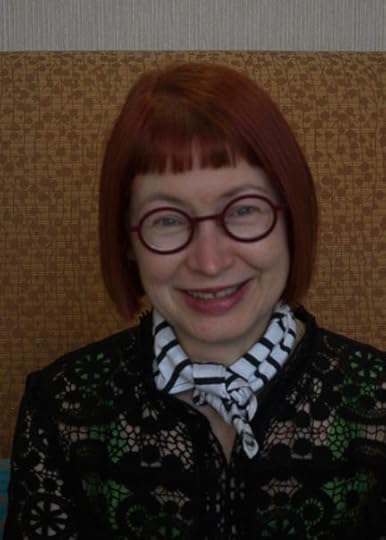 Karla Huebner
Karla HuebnerLearn more about Karla at her website and her blog.
March 1, 2021
2021 Reading–February
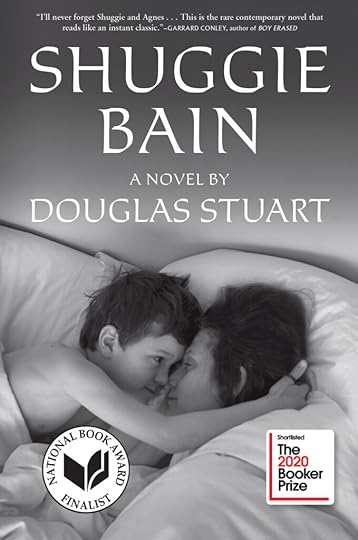
Shuggie Bain by Douglas Stuart is a tough read. Beautifully written (it won the Booker prize last year), it is set against a backdrop of poverty in Scotland. The pain of the story is exacerbated by the title character’s homosexuality, evident to all from an early age and the cause of endless abuse, verbal and otherwise from family and neighbors. The boy’s mother is an extreme alcoholic, which is apparently not too uncommon in that community, and she will do just about anything for a drink. The book begins with Shuggie as a young teen in a bedsit attending school, and we wonder how he got there and what’s up with his family. He thinks kindly of his mother, so where is she? We then jump back in time a few years to see him at home with his mother and father, grandparents, his step-brother and -sister, as the family, which is already a mess, falls apart. It just gets worse and worse. While the book has received many accolades, it’s not exactly an enjoyable read. I’ve seen comparisons to Hanya Yanagihara’s A Little Life, a book that I loathed for its graphic details and the unwillingness of the main character to extricate himself from his situation. Here, though, Shuggie is a kid still and we don’t dwell in his screwed-up adult psyche, except that the author says the story is based on his own life, so in a sense we do.
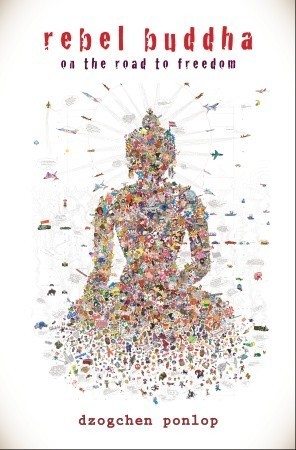
Rebel Buddha by Dzogchen Ponlop is a helpful approach to Buddhism that sheds the religiosity of Buddhism, which I appreciated. In the audio version, the introduction is read by the author, Rinpoche Dzogchen Ponlop, born in Sikkim and raised in a Tibetan Buddhist monastery, but later educated in the US and now an American citizen. I found this take on Buddhism to be refreshing, as it doesn’t depend on all of the teachings but boils it all down into a guide for better living, including practical advice for meditation. It recognizes that Buddhism in America won’t be exactly like Buddhism in Asia, even if we follow the Buddha’s path. Not sure how rebellious that is, but it was a helpful reminder. In an appendix, the author provides a concise to guide to meditation, including analytical meditation in which the sitter contemplates a question, not just the breath or an object.
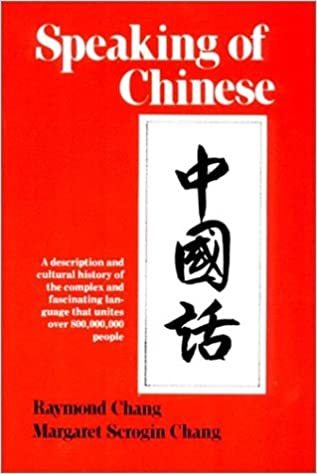
Speaking of Chinese by Raymond Chang and Margaret Scrogin Chang is one of several books about the Chinese language I’ve had on my bookshelves for ages. Now that I’m spending time daily on my Chinese studies, I thought I might dip into some of these. This one is an easy read and a decent overview, but not aimed at someone who has studied the language in any kind of depth. It describes the origins of the characters, does a nice job of differentiating between various kinds of characters (ideographs vs. pictographs, for example), and I did enjoy the last chapter on the development and practice of Chinese calligraphy, an art form I’ve dabbled in. In the edition I read (1978; I gather it’s been updated), however, some of the comments and attitudes seem dated. For example, the authors don’t seem to care much for the PRC. Also, they refer to the various forms of Chinese other than Mandarin, such as Cantonese, as dialects of Chinese, whereas I think linguists today categorize many of them as separate languages. Still, if you’re interested in an introduction to Chinese, this is a good start.
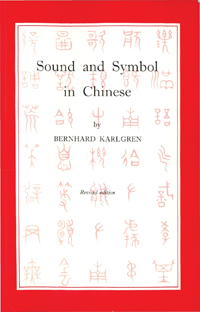
Sound and Symbol in Chinese by Bernhard Karlgren is a short book about the Chinese language that covers a lot of the same ground as Speaking of Chinese, but also offers some more sophisticated nuance that you would expect from a linguist. For example, Karlgren goes into some detail about how we know roughly how characters were pronounced in ancient times and how particular characters evolved—something he is apparently famous for. The edition that I have (and that I’ve owned for decades) was published in 1971 but the book originally was published in 1923. I see that there are newer editions, and I wonder if they have been updated to use pinyin romanization of Chinese, because the romanization Karlgren uses is almost unintelligible to me. Still, it’s an interesting story because it’s such a fascinating language and Karlgren tells it with great authority.
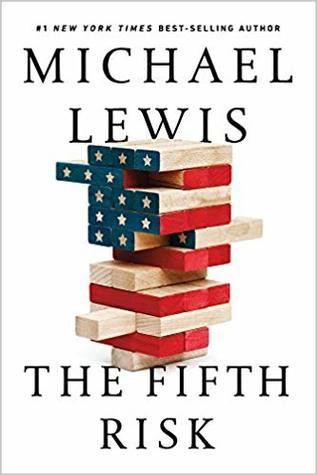
The Fifth Risk by Michael Lewis is my book club’s pick for this month, and I liked it a lot. While we need to put the disastrous Trump administration behind us, the book details just how amateurish an operation it was, starting from the transition team and continuing from there. Many of us felt that Trump didn’t really want to be President (although he wouldn’t have wanted to lose the election, either) and so he wasn’t prepared in any way to start governing, and didn’t listen to anyone who tried to tell him what he needed to do. Chris Christie—not exactly my favorite politician—actually tried to run the transition, and he was shoved aside by Kushner and Bannon. The book takes case studies of the Departments of Energy, Agriculture, and Commerce—significant because these departments house much of the government’s scientific knowledge—and how shockingly disinterested Trump’s people were in even figuring out what those departments did. It’s a terrific read about the value of the data in these departments.
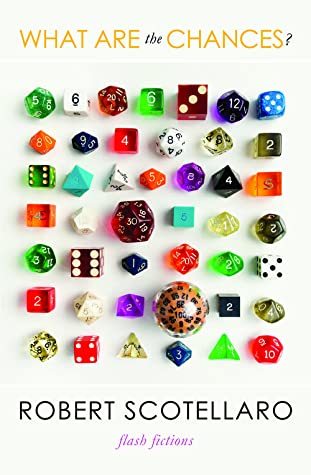
What are the Chances by Robert Scotellaro is an excellent collection of flash-fictions. I’m not a big lover of flash, although I have written some of my own, because in the end there isn’t much to hold onto. Only a couple of the sixty or so stories here go beyond two pages, and most are less than a page. If there’s a theme, it seems to be centered on rocky marriages, but not, I think, in a way that is making a larger point. Having said that, these are terrific examples of the form, in my opinion, which do a lot of work in a short space. In flash there isn’t room to tell a story traditionally, with rising action, a climax, and resolution. Often the reader must be satisfied with a climax and resolution that are hinted at, after the story’s central conflict is revealed. That is done very well here.
I’ve Got Questions for Tyrone Jaeger
Editor’s Note: This exchange is part of a series of brief interviews with emerging writers of recent or forthcoming books. If you enjoyed it, please visit other interviews in the I’ve Got Questions feature.
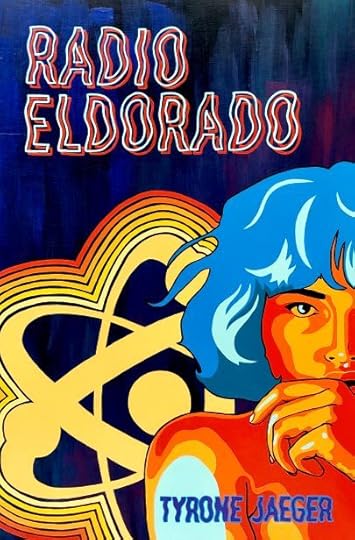 Radio Eldorado by Tyrone JaegerWhat’s the title of your book? Fiction? Nonfiction? Poetry? Who is the publisher and what’s the publication date?
Radio Eldorado by Tyrone JaegerWhat’s the title of your book? Fiction? Nonfiction? Poetry? Who is the publisher and what’s the publication date?Radio Eldorado; Braddock Avenue Books, fiction (novel), June 1, 2020
In a couple of sentences, what’s the book about?Painting on a canvas large enough to encompass all the hopes and fears of a generation, Jaeger’s novel transports the reader back to the 1960s and an America rife with internal conflict and anxiety: Vietnam, the ever-present threat of mutual assured nuclear destruction, Free Love—a psychedelic funhouse of social anxiety—all played out to a proto-punk rock soundtrack guaranteed to blow your mind. Populated with characters across the political and social spectrum, Radio Eldorado focuses on the members of a band called the Wound Tights and their entourage of friends, family, and groupies as they all find ways to personally negotiate the volatile landscape, trying desperately to find answers. What is marriage? Parenthood? Music? Country? all in a world seemingly on the brink of violence.
What’s the book’s genre (for fiction and nonfiction) or primary style (for poetry)?Literary Fiction; Historical Fiction; Vietnam War; Protest Literature; Rock-and-Roll Love Story
What’s the nicest thing anyone has said about the book so far?I asked Emily Mente, a former student of mine, to design the cover, and her painting as a response to the manuscript says so much without using a single word (save the title!).
Radio Eldorado stays with you long after you’ve finished reading its pages. There’s a sticky humming energy to Tyrone Jaeger’s prose that’s impossible to leave behind. His Cynthia Hutton is a cowgirl radical searching for bittersweet exile in a world that isn’t quite ready for her. This excellent debut novel explores the turmoil and freedom of 1969 with vivid prose and harmonic cadence. I couldn’t put it down.
—Sherrie Flick, author of Reconsidering Happiness and Whiskey, Etc.
If you’re like me and have been waiting for a novel that finally defines the cultural revolution of the sixties and seventies in this country, you need to read Radio Eldorado! Jaeger writes like a man who has lived the many lives he explores in his debut novel, speaking with an authenticity that has been too often missing in earlier stories about hippies, drugs, rock and roll and anti-war activists. Not only is he the consummate craftsman whose sentences ring with breathtaking lyricism and grit, but he is also a writer who opens our hearts and minds to the struggles of the people he brings to life as they try to grasp the changes that are breaking apart the world around them while they must simultaneously redefine themselves and discover the true facts that have led to the challenges of virtually every shared communal and political value they’ve ever known. What results is a novel full of humor, satire, and uncompromising truth. Jaeger has written a novel that is as much for today’s fraught world as it is a reconstruction of the past. He reminds us that we can learn from the past, and not only that, we must remember it before it’s too late.
—Jonis Agee, author of The Bones of Paradise
Radio Eldorado is a music-soaked ride that is dark and funny, steeped in some history, and fueled by misadventures–I love these characters, this book, and Tyrone Jaeger–who is going to blow you away.
—Jodi Angel, author of You Only Get Letters from Jail
Radio Eldorado is a bit like if Daisy Jones & the Six was the abandoned love child of Flannery O’Connor and Charles Portis and raised by adoptive parents Denis Johnson and Barry Hannah.
Why this book? Why now?I was interested in the counter-culture and protest politics of the 1960s, and the more I learned about the era and the people at the heart of the resistance, the more I see echoes in our current troubled and hopeful moment.
Other than writing this book, what’s the best job you’ve ever had?I teach at Hendrix College and the institution’s generosity—along with the Hendrix-Murphy Foundation—allowed me time to write Radio Eldorado.
What do you want readers to take away from the book?Equal measures of anger, unease, and laughter.
What food and/or music do you associate with the book?Food: Corned beef and cabbage, rice and beans, and hot dogs
Music: Iggy & the Stooges; the Velvet Underground; Captain Beefheart & His Magic Band; and The Rolling Stones Get Yer Ya-Ya’s Out, in particular, the woman who can be heard saying, “Paint It black. Paint it Black. Paint It Black, you devil!” before they kick into “Sympathy for the Devil.” (this was the inspiration for the character of Pearl).
What book(s) are you reading currently?The Quick and the Dead by Joy Williams
An American Marriage by Tayari Jones (just finished)
A Swim in a Pond in the Rain by George Saunders (rereading sections)
Raised in Captivity by Chuck Klosterman
 Tyrone Jaeger
Tyrone JaegerLearn more about Tyrone at his website.
Buy the book from the publisher, WordsWorth Books, Small Press Distribution, Books-A-Million, Bookshop, or Amazon.
February 26, 2021
I’ve Got Questions for Shuly Xóchitl Cawood
Editor’s Note: This exchange is part of a series of brief interviews with emerging writers of recent or forthcoming books. If you enjoyed it, please visit other interviews in the I’ve Got Questions feature.
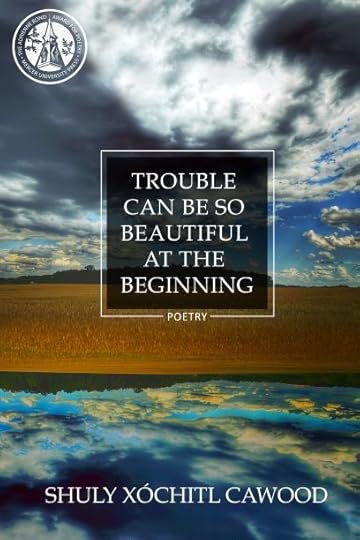 Trouble Can Be So Beautiful at the Beginning by Shuly Xochitl CawoodWhat’s the title of your book? Fiction? Nonfiction? Poetry? Who is the publisher and what’s the publication date?
Trouble Can Be So Beautiful at the Beginning by Shuly Xochitl CawoodWhat’s the title of your book? Fiction? Nonfiction? Poetry? Who is the publisher and what’s the publication date?Trouble Can Be So Beautiful at the Beginning (, February 1, 2021). It’s a poetry collection.
In a couple of sentences, what’s the book about?I write about what it means to be young, to fall in and out of love, to break and become whole again, to face tragedy and fear and come out weaker or stronger, to struggle with power, and to let go of those we love not because of lack of feeling but because of earned wisdom.
What’s the book’s genre (for fiction and nonfiction) or primary style (for poetry)?I write free verse poetry. I strive for my poems to be accessible to all readers.
What’s the nicest thing anyone has said about the book so far?“The word stunning comes to mind” was what someone said to me a few days ago.
What book or books is yours comparable to or a cross between? [Is your book like Moby Dick or maybe it’s more like Frankenstein meets Peter Pan?]This is always such a hard question. I can tell you a couple of poets I admire and strive to write like: Ada Limón and Jacqueline Osherow. But I could never say my work is like theirs. Maybe one day!
Why this book? Why now?I started writing this book thirty years ago. I’ve written hundreds of poems over the years, but it wasn’t until the last five to ten years that I really picked up momentum with writing most of the poems in this collection. I wasn’t going to enter the book into the Adrienne Bond Award for Poetry contest, but my dear friend said yes, you are, so I did: I sent in the collection to Mercer University Press’s annual contest, and I was lucky enough to have it win.
Other than writing this book, what’s the best job you’ve ever had?Being an extrovert, I have always loved working with people, and years ago I worked in admissions recruiting for my alma mater, Wittenberg University. It was my favorite job—it combined people with writing (I wrote and edited some of the admissions materials). But I would say that job rivals with what I am doing now: teaching memoir and personal essay workshops and running prompt-writing sessions. I love helping other people attain their dreams.
What do you want readers to take away from the book?I want them to have a glimpse into other people’s lives—whether mine or the people (real or imagined) I wrote about. I want readers to find poetry that is accessible—so many people say they don’t like poetry, and often it’s because they’ve only been exposed to poems that are more challenging to decipher.
What food and/or music do you associate with the book?Since I write a lot about Mexico, maybe some taquitos, pollo con mole, and flan. Music? Mariachis! And maybe some ballads since I write a lot about love.
What book(s) are you reading currently?I just finished Felon by Reginald Dwayne Betts and am now reading Barbara Kingsolver’s How to Fly (In Ten Thousand Easy Lessons).
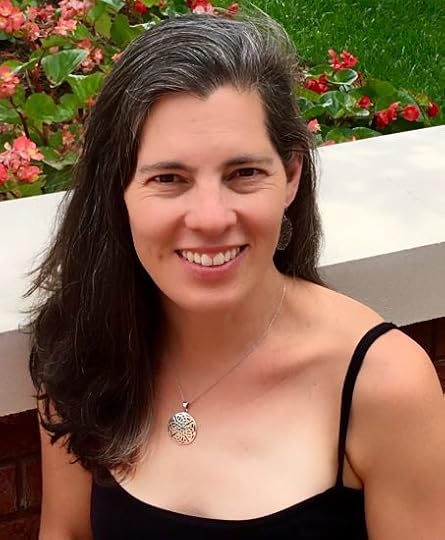 Shuly Cawood
Shuly CawoodLearn more about Shuly on her website.
Buy the book from the or Bookshop.
February 24, 2021
I’ve Got Questions for Carol Coven Grannick
Editor’s Note: This exchange is part of a series of brief interviews with emerging writers of recent or forthcoming books. If you enjoyed it, please visit other interviews in the I’ve Got Questions feature.
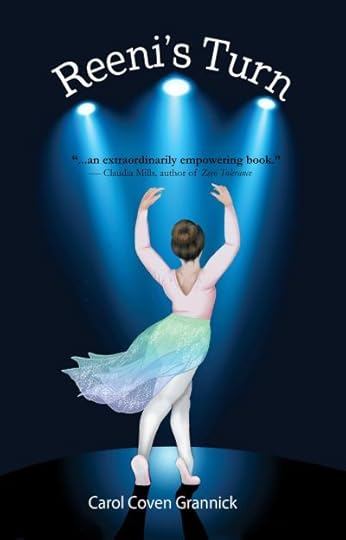 Reeni’s Turn by Carol Coven GrannickWhat’s the title of your book? Fiction? Nonfiction? Poetry? Who is the publisher and what’s the publication date?
Reeni’s Turn by Carol Coven GrannickWhat’s the title of your book? Fiction? Nonfiction? Poetry? Who is the publisher and what’s the publication date?Reeni’s Turn (Fitzroy Books, September 2020) is a middle-grade novel in verse.
In a couple of sentences, what’s the book about?Reeni is an eleven-year-old introvert and skilled dancer who longs to come out of the shadows and take her turn to solo. Her lifelong performance anxiety and her changing body challenge her obstacle-filled, but persistent search for courage, body acceptance, and her own strong voice.
What’s the book’s genre (for fiction and nonfiction) or primary style (for poetry)?Reeni’s Turn is an easy-reading novel in free verse.
What’s the nicest thing anyone has said about the book so far?“REENI’S TURN is a story of triumph, of a girl moving from perceived heaviness in her body and her spirit (“weighed down with secrets too heavy for a girl”) to a grounded lightness, which has nothing to do with weight, (“where flying was a possible dream”).” —Amy Alznauer, The Strange Birds of Flannery O’Connor, The Boy Who Dreamed of Infinity, and Flying Paintings.
What book or books is yours comparable to or a cross between? [Is your book like Moby Dick or maybe it’s more like Frankenstein meets Peter Pan?]In terms of middle grade novels in verse, readers might also look at Sharon Creech’s fabulous Heartbeat and for even younger readers, Eileen Spinelli’s Where I Live Now, both of which beautifully handle intense, but so accessible, emotional arcs.
Why this book? Why now?Reeni’s Turn evolved from my first children’s story in Cricket Magazine, published in 2001, and dealt with the learned—and inaccurate—shame young children can feel about their non-thin bodies that keep them from shining. As a children’s writer and clinical social worker specializing in helping others find comfort with food, body, and self, I worked for a decade on and off to create an authentic middle grade story. While some picture books and many YA books exist handling body size/weight issues and eating disorders, only a few middle grade books still exist. None seemed to take on the diet industry’s impact on young children, which has long been—and still is—a destructive force in the lives of children and adults.
Other than writing this book, what’s the best job you’ve ever had?After retiring from my clinical private practice, I worked for seven years as office administrator in an extraordinary early childhood center, doing hundreds of things each day that supported teachers, administrator, and the children. I loved it, and my children’s poetry-writing blossomed!
What do you want readers to take away from the book?I’d like children to believe that value, skills, and dreams are not tied to the size, shape, and weight of our bodies, and that quiet voices can still be strong voices.
What food and/or music do you associate with the book?Swan Lake by P. Tchaikovsky and Challah, the Sabbath (Shabbat) bread that regularly figures into Reeni’s family life.
What book(s) are you reading currently?I recently read Turtle Boy, the Sydney Taylor Award 2021 Gold Medalist in middle grade literature, and I’ve got a stack of “recommendeds” waiting for me!
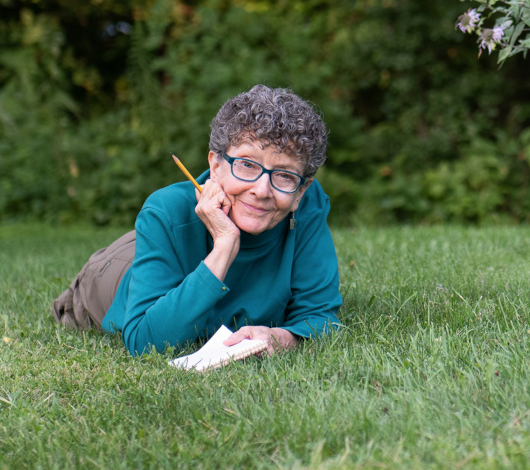 Carol Coven Grannick
Carol Coven GrannickLearn more about Carol at her website.
Follow her on Facebook, Twitter, and Instagram.
Buy the book from the publisher, Bookshop, or Amazon. The Bookstall in Winnetka IL may have signed copies available.
February 22, 2021
I’ve Got Questions for Julie Zuckerman
Editor’s Note: This exchange is part of a series of brief interviews with emerging writers of recent or forthcoming books. If you enjoyed it, please visit other interviews in the I’ve Got Questions feature.
 The Book of Jeremiah by Julie ZuckermanWhat’s the title of your book? Fiction? Nonfiction? Poetry? Who is the publisher and what’s the publication date?
The Book of Jeremiah by Julie ZuckermanWhat’s the title of your book? Fiction? Nonfiction? Poetry? Who is the publisher and what’s the publication date?The Book of Jeremiah, a novel-in-stories, came out in May 2019 from Press 53.
In a couple of sentences, what’s the book about?The Book of Jeremiah tells the story of awkward but endearing Jeremiah Gerstler—the son of Jewish immigrants, brilliant political science professor, husband, father. Jeremiah has yearned for respect and acceptance his entire life, and no matter his success, he strives for more. There is something familiar about Jeremiah, as if he is someone you know – perhaps a cousin, uncle, or friend. Spanning eight decades and interwoven with the Jewish experience of the 20th century, the tale contains considerable loss, trouble, and suffering, but its thirteen stories are also laced with love, forgiveness, hope, optimism, and even what we might call salvation.
What’s the book’s genre (for fiction and nonfiction) or primary style (for poetry)?The book is literary fiction and could be considered either a story collection or a novel-in-stories. One thing that most readers have seemed to enjoy is that the stories aren’t in chronological order. The first story takes place when Jeremiah is 11, the next one jumps forward to when he’s 80, the third when he’s in his 20s, and so on.
The first story I wrote in the collection is “MixMaster,” which is the last story chronologically (and in the book). Jeremiah is 82 in MixMaster, and when I finished writing that story, I was enamored with his character. I wanted to unravel his life to find out how he became the man he is at 82. In some sense the reader’s experience mirrors my own, in that Jeremiah was a puzzle to put together. With each story, the reader gains a clearer view of the picture.
What’s the nicest thing anyone has said about the book so far?I’ve been blessed with many favorable reviews, and it’s hard to pick just one! I think my favorite is from Marrie K. Stone, who hosts the Writers on Writing podcast:
“Julie Zuckerman accomplishes what every author attempts but can’t always achieve—creating a fully rich, realized, complex, often aggravating, and always sympathetic, cast of characters who allow the reader to feel the full range of human emotion without relying on a lot of plot twists, thrills, or other artificial devices. In the spirit of Elizabeth Strout’s Olive Kittridge books, Zuckerman brings Jeremiah and his family to full fruition through 13 independent stories. She also tells the tale of the 20th century, in all its historical complexities and scandals. Every character had the capacity to surprise, while never feeling manipulative or inauthentic. It’s a literary achievement and a collection difficult to put down once begun.”
What book or books is yours comparable to or a cross between? [Is your book like Moby Dick or maybe it’s more like Frankenstein meets Peter Pan?]I LOVE when people bring up Elizabeth Strout’s Olive Kitteridge, as Marrie did in her review (and as you did in yours, Cliff)! Olive Kitteridge was a model for me when I set out to write Jeremiah, as I hope readers appreciate getting to know Jeremiah layer-by-layer, as I did with Olive.One of the highlights of my literary life was meeting Elizabeth Strout during her book tour for Olive, Again! I told her how much Olive meant to me and gave her a copy of The Book of Jeremiah.
Why this book? Why now?There’s a timelessness and universality to the questions the book tries to address. Another review, this one in the Asheville Citizen Times, expressed it this way: “What makes an ordinary life an extraordinary one? Is it the lives we touch? The things we accomplish? The help we extend to others? This is the question so many of us desperately want a simple answer to, a “how to” guide that will ensure our lives matter… ‘The Book of Jeremiah’ beautifully explores such questions through a series of stories that surround the life of kind, albeit awkward, Jeremiah Gerstler.” I love that, because it means that Jeremiah will be relevant to readers of all kinds, for many years to come.
Other than writing this book, what’s the best job you’ve ever had?My entire career has been in high tech at companies of all sizes. My favorite job was for a small startup, where I was the VP of Marketing. Our technology and apps were intended for EMTs, firefighters, campus security and other first responders, and could make the difference in life-saving situations. There were only 15 people or so in the company, we were all highly motivated and passionate about our work. I recently started a new job, this time at an educational technology company, and it feels a lot like that. I’m working long hours, but when you’re motivated by the company’s mission, it makes a world of difference.
My favorite non-paying job – and this goes waaaay back to my college days – was serving as the editor-in-chief of the Columbia Daily Spectator. We’d pull all-nighters five nights a week to write, edit and get the paper out. An amazing learning experience, often intense, but loads of fun. I’m still in touch with my Spectator friends, one of whom is Robert Kolker, whose latest book, Hidden Valley Road, was a New York Times Top Ten Book of 2020.
What do you want readers to take away from the book?What’s been most gratifying for me as a writer is to hear from readers who say they can see themselves or their family members in my characters. In one word: relatable. There’s often so much strife and tension within families. What I’ve tried to do with Jeremiah is to show that perhaps we should try to be more forgiving, even with – or especially with – difficult family members. Though Jeremiah and his family may behave badly at times, there’s an undercurrent of acceptance and forgiveness between them. In short, love wins.
What food and/or music do you associate with the book?Molly, Jeremiah’s wife, is a piano teacher and later in life takes up the electric guitar. She’d always been more of a Carole King/James Taylor fan, so Jeremiah and her kids are amused by her new hobby. I don’t remember if a reference to Carole King made it into the final version of the story (Birthday Bash), but I listened to “Live at the Troubadour” (King/Taylor’s joint album) on repeat when I wrote that story.
Molly is a big baker, and Jeremiah tries his hand at baking in the final story, so there are a lot of brownies, babka, and cookies in the book, as well as to traditional Jewish foods like kneidelach (matzah balls), brisket, etc. In fact, I have a recipe section on my website, and I include a recipe each month in my newsletter. And before Claire Foxx of Press 53 came up with the brilliant idea of using silhouettes for the book cover, Kevin Morgan Watson (the publisher of Press 53) and I bandied around the idea of having a brownie on the cover!
What book(s) are you reading currently?I’m reading Elizabeth Gilbert’s City of Girls and listening to George Saunders’ Lincoln in the Bardo. The audio version has 166 different narrators – it’s wild! And once I figured out what was going on, I’ve been enjoying it.
My TBR pile includes Rachel Beanland’s Florence Adler Swims Forever; Douglas Stuart’s Shuggie Bain; Jane Bernstein’s The Face Tells the Secret; Sari Rosenblatt’s Father Guards the Sheep (Stories); Jenny Offill’s Weather; Christine Sneed’s The Virginity of Famous Men: Stories; Alexander Chee’s How to Write an Autobiographical Novel: Essays; and my friend Avner Landes’ debut (coming out in March) Meiselman: The Lean Years.
 Julie Zuckerman
Julie ZuckermanLearn more about Julie at her website.
Subscribe to her monthly newsletter.
February 19, 2021
I’ve Got Questions for Julie Wittes Schlack
Editor’s Note: This exchange is part of a series of brief interviews with emerging writers of recent or forthcoming books. If you enjoyed it, please visit other interviews in the I’ve Got Questions feature.
 This All-at-Onceness by Julie Wittes SchlackWhat’s the title of your book? Fiction? Nonfiction? Poetry? Who is the publisher and what’s the publication date?
This All-at-Onceness by Julie Wittes SchlackWhat’s the title of your book? Fiction? Nonfiction? Poetry? Who is the publisher and what’s the publication date?My nonfiction book (essentially, a memoir in essays) is called This All-at-Onceness: A Memoir of Hope and Satellites, and it was published by Pact Press (an imprint of Regal House) in June of 2019.
In a couple of sentences, what’s the book about?This All-at-Onceness is a personal journey through the political and cultural movements that have shaped every generation from the Baby Boomers to the Parkland kids. It examines the unlikely and twisting relationship between idealism and engineering that promised a future of progress and hope, but only occasionally delivered on it. From the civil rights and anti-war movements to the birth of Second Wave feminism, from the wintery ‘70s to the shiny rise of corporate culture in the ‘80s, from the democratic early days of the Web to today’s social surveillance state, this is a book about idealistic energy and how it travels through time.
What’s the book’s genre (for fiction and nonfiction) or primary style (for poetry)?The book is part history, part memoir, written in the form of linked personal essays.
What’s the nicest thing anyone has said about the book so far?Well, I was pretty pleased with this Kirkus Review: “Schlack recounts her ideological journey with humor and nuance throughout this sometimes-wry, sometimes-lyrical memoir. She riffs on what she sees as foibles of progressive dogma as well as absurdities of corporate culture … Schlack’s graceful prose balances clear-eyed reflection with luminous passages that celebrate past passions … A thoughtful, witty, and evocative recollection of a life and the convictions that energized it.” – Kirkus Reviews (Starred review)
But I was also delighted by a review a reader unknown to me posted on Amazon: “…These musings simultaneously speak to the shared experiences of a generation — the Summer of Love, UFO sightings, marches against the Vietnam War, Watergate and Nixon’s resignation, 9-11, the unspeakable rise of Trump, and all the music along the way. Also paradoxical is the blend of skepticism, sometimes veering into cynicism, tempered by a never completely exhausted wellspring of idealism, hope, and — yes — joy. Wittes Schlack is an unforgettable and irresistible unifying guide throughout; fiercely intelligent, engagingly vulnerable, disturbingly honest, disarmingly funny.”
What book or books is yours comparable to or a cross between? [Is your book like Moby Dick or maybe it’s more like Frankenstein meets Peter Pan?]Oh man, this is such a hard question. Stylistically, I’d like to think it emulates books like Eula Biss’s Having and Being Had, and Rebecca Solnit’s Recollections of my Non-Existence, but is funnier than either. In terms of content, Douglas Coupland’s Microserfs comes to mind. Maybe it’s a mash-up of one of those books with a pop-culture parody like Leigh Stein’s Self Care. Yeah, that’s it.
Why this book? Why now?Now that Trump’s been banned from Twitter, the book feels less essential to me. But it arose from my day job as a market researcher and online community-builder, and what I learned from that work about the promise, joys, and perils of both pervasive digital targeting and perpetual connectedness are as relevant now as when I began this book ten years ago.
Other than writing this book, what’s the best job you’ve ever had?It’s probably the semester or so that I spent working at an ice cream parlor when I was in college. There was nothing ethically ambiguous about it, and though I eventually got fired for making the ice cream cones too big, the pleasure my customers took from that sin was entirely worth it.
What do you want readers to take away from the book?In this time of such peril and such hope, I want readers to revisit the idealism of their youth and find what was right and durable in it.
What food and/or music do you associate with the book?Montreal bagels – the finest of bagels. As for music, wow, a lot: Aretha’s I Never Loved a Man the Way that I Love You, The Doors first album, the Isley Brothers’ Time, Simon and Garfunkle’s Sound of Silence, and though it shows up nowhere in the book, Rickie Lee Jones’ Horses.
What book(s) are you reading currently?Heather Cox Richardson’s How the South Won the Civil War and Tana French’s The Searcher. And next in the queue, Maggie Doherty’s The Equivalents: A Story of Art, Female Friendship, and Liberation and Sue Miller’s Monogamy.
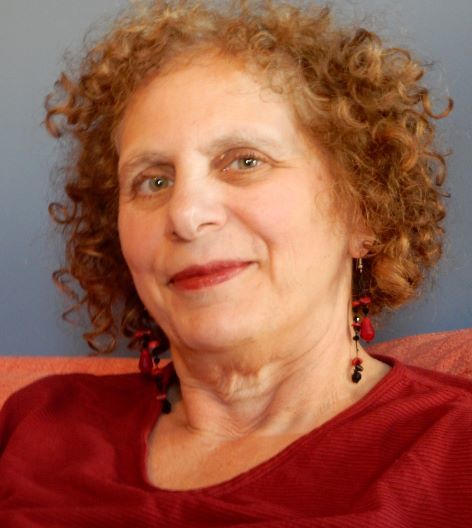 Julie Wittes Schlack
Julie Wittes SchlackLearn more about Julie at her website.



